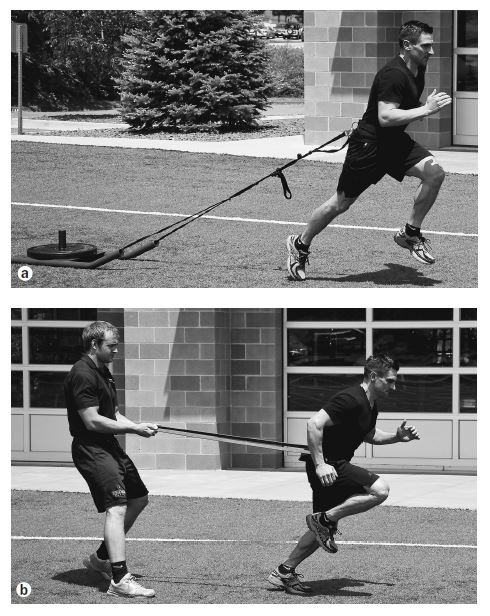Light Sled Pulls
by NSCA's Guide to Program Design
Kinetic Select
June 2017
Learn how to perform a light sled pull, which can help increase speed strength, power, and stride length.
The following is an exclusive excerpt from the book NSCA's Guide to Program Design, published by Human Kinetics. All text and images provided by Human Kinetics.
Purpose
Increase speed strength, power, and stride length
Movement
The athlete should do the following:
· Attach a lightweight sled with an adjustable harness or waist strap
· Utilize proper speed form and technique (as outlined in the speed technique section of this chapter)
· Sprint for 10 to 40 yards (9-36 m) (a)
When athletes perform this drill, a strength and conditioning professional should observe their form, technique, and speed in covering the yardage. If the strength and conditioning professional notices that the athlete’s form or technique is faulty or that the time to complete the distance is longer than their standard time by more than 10%, the resistance may be too heavy and should be reduced.
A tire, bag, or a partner (b) holding a cord can also be effective as a resistance device. Recently, some nonmotorized treadmills have been marketed that provide controlled resistance. Resistance must be at a level that allows athletes to maintain proper running form.

Developed by the National Strength and Conditioning Association (NSCA), this text offers strength and conditioning professionals a scientific basis for developing training programs for specific athletes at specific times of year. The book is available in bookstores everywhere, as well as online at the NSCA Store.
- Privacy Policy
- Your Privacy Choices
- Terms of Use
- Retraction and Correction Policy
- © 2025 National Strength and Conditioning Association